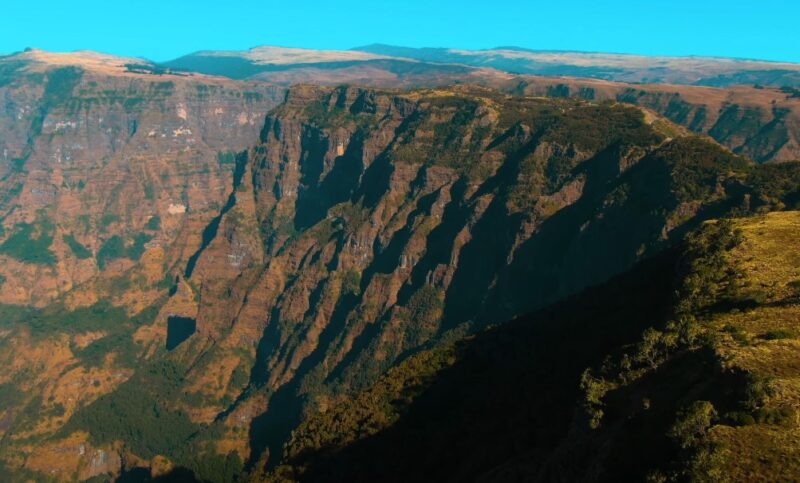Ethiopia is a land of rich history, diverse cultures, and stunning landscapes. When you visit, expect to be amazed by the ancient sites, vibrant cities, and welcoming people.
With its unique mix of traditions and modern influences, Ethiopia offers a travel experience unlike any other.
Understanding what to expect can help you make the most of your journey.
You’ll discover everything from bustling markets to serene highlands. Whether you’re exploring Lalibela’s rock-hewn churches or trekking through the Simien Mountains, Ethiopia promises unforgettable adventures at every turn.
10) Lake Tana Monasteries
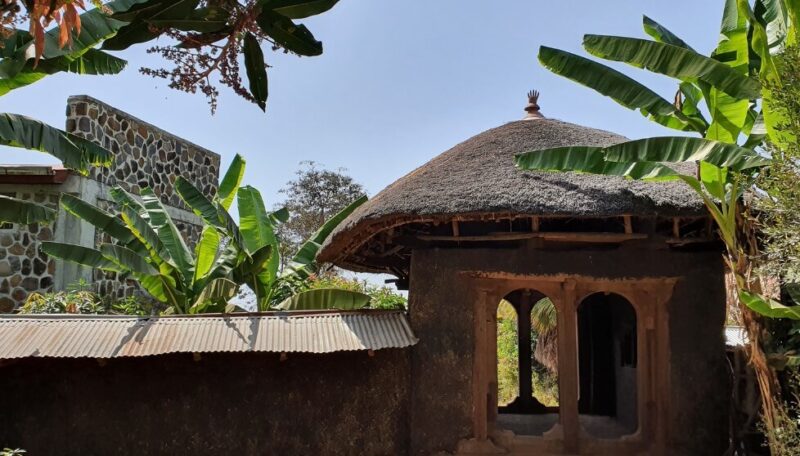
When you visit Ethiopia, exploring the monasteries around Lake Tana is a must.
The lake is home to over 20 monasteries, many of which have stood for hundreds of years. Each monastery holds valuable religious artifacts, such as ancient manuscripts, paintings, and statues.
One notable monastery is Tana Qirqos. Located on the eastern shore of the lake, it is one of Ethiopia’s oldest. You’ll see rituals and practices unchanged since the Old Testament, including ancient sacrificial stones still used in worship.
Some monasteries are accessible only by boat. A boat trip on Lake Tana lets you enjoy the serene water and landscape. It’s a peaceful and scenic journey that enhances your visit to these historic sites.
Visiting the monasteries is also a dive into Ethiopian culture and history. Each monastery serves as a guardian of the nation’s heritage, offering a glimpse into the past.
Remember, while some monasteries show their age with worn architecture and artwork, your visit helps preserve them.
9) Gondar’s Fasil Ghebbi
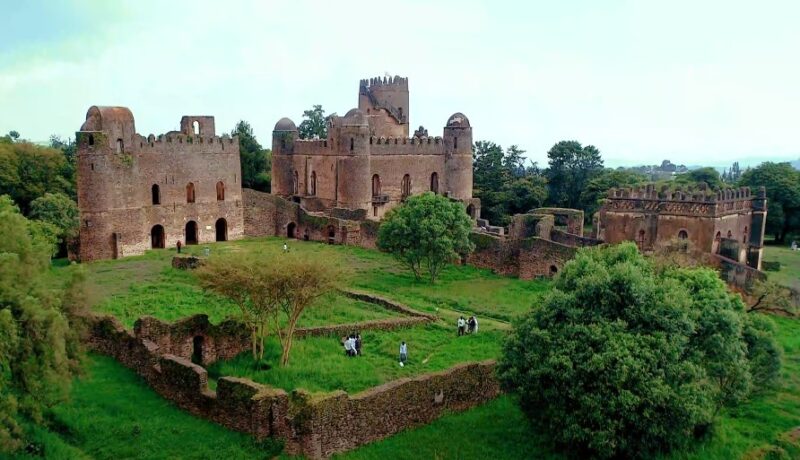
Gondar’s Fasil Ghebbi, also known as the Royal Enclosure, is a landmark you should not miss. Located in Gondar, it’s a historic site filled with fascinating architecture.
Fasil Ghebbi was the residence of Ethiopian emperors from 1632 to 1855. The walled compound includes several castles, churches, and other structures. It’s designated as a UNESCO World Heritage Site because of its historical importance.
As you walk through Fasil Ghebbi, you’ll see a blend of architectural styles, including Hindu, Arabic, and baroque influences. This mix makes it a unique site in Ethiopia.
The main castle, Fasilides’ Castle, is the highlight of the enclosure. Built by Emperor Fasilides, it stands tall and offers views of the surrounding area. You’ll also find well-preserved churches and other communal buildings.
The site is rich with history. Each corner of Fasil Ghebbi reveals stories of Ethiopia’s royal past. The area was once a royal fortress-city, and it still retains that majestic aura.
When visiting, take your time to explore each structure. The castles might be crumbling, but they hold so much history within their walls.
8) Danakil Depression’s Acid Pools
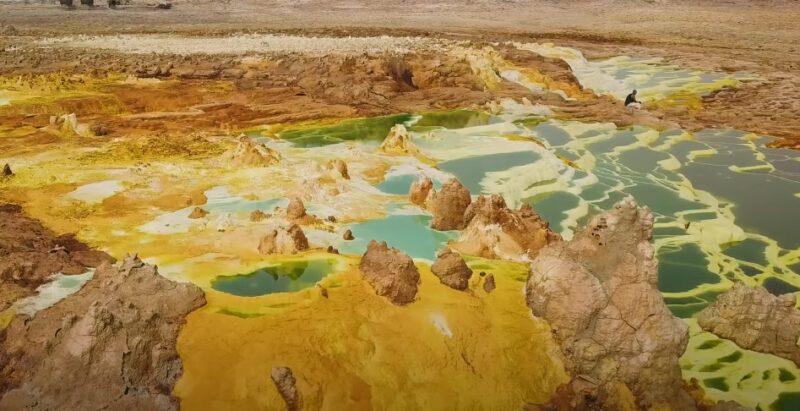
The Danakil Depression is known for its striking acid pools. These pools are filled with bright, technicolor liquids that range from yellow to green and red. The landscape they create is both beautiful and otherworldly.
The acid pools are a result of volcanic activity and the high mineral content of the area. You can see sulfur crystals and salt deposits forming around the edges.
While the pools are stunning, they are also dangerous. The water is highly acidic and can cause burns if touched. Be sure to follow all safety guidelines and stay on marked paths.
It’s best to visit the Danakil Depression with a guided tour. Local guides know the safest routes and can provide you with important information about the area.
7) Harar Jugol’s Ancient Walls
Harar Jugol, located in eastern Ethiopia, is famous for its impressive ancient walls. Built in the 12th century, these walls were designed to protect the city from invaders.
You will find that the walls are made of stone and have survived centuries of wear and tear. They are about four meters tall and encircle the old town, providing a sense of history and security.
When you visit, you’ll be able to walk along these walls and feel the weight of the past. The walls also feature several historic gates, each with its unique design and history.
As you explore, you’ll notice the intricate craftsmanship that went into constructing these walls. They not only served a defensive purpose but also helped shape the architecture of Harar Jugol.
The area surrounding the walls is equally fascinating, filled with narrow alleys and traditional Harari houses. The walls themselves provide a backdrop to the vibrant, bustling life within the old city.
A visit to Harar Jugol’s ancient walls is a step back in time. It’s a chance to connect with a rich history that continues to influence the culture and identity of this unique Ethiopian city.
6) Omo Valley Tribes

When you visit Ethiopia, a trip to the Omo Valley offers a exceptional cultural experience. The valley is home to many indigenous tribes, each with its own traditions and lifestyle.
The Mursi tribe is one of the most well-known. They are known for their body decorations and distinctive lip plates. The Mursi people have a semi-nomadic lifestyle and have lived in the region for thousands of years.
The Ari tribe is the largest in the Omo Valley, with around 200,000 members. They are skilled farmers and grow a variety of crops like grains, fruit, and coffee. Their craftsmanship in pottery is also notable.
Another tribe you might encounter is the Hamar tribe. They are famous for their red clay hair decorations and the bull jumping ceremony, a rite of passage for young men.
You’ll also find the Nyangatom and Karo tribes. The Nyangatom are known for their cattle herding, while the Karo tribe is recognized for their intricate body paintings.
Traveling to the Omo Valley can be challenging but rewarding. You can reach it by bus or by flying to Jinka, the capital of the Omo Region. From there, guided tours are recommended to truly appreciate the culture and customs of these tribes.
5) Aksum’s Ancient Ruins
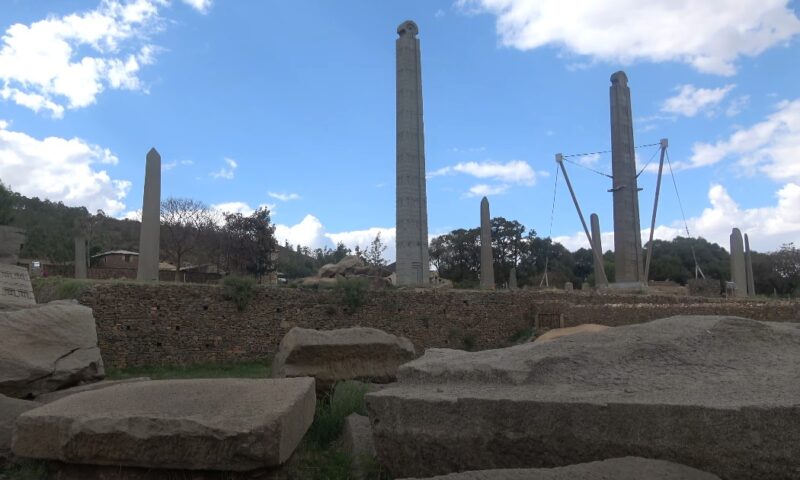
When you visit Aksum, you can explore one of Africa’s most important ancient cities. Aksum was the capital of the Aksumite Empire, which thrived from around 100 AD to 940 AD.
A prominent feature of Aksum is its massive obelisks. These tall, monolithic structures served as markers for underground tombs of royalty and nobility. The largest, the Great Stele, once stood over 100 feet tall.
The ruins also include the impressive royal tombs of ancient kings and queens. These tombs offer a glimpse into the grandeur of the Aksumite civilization. You can see intricate carvings and the advanced architectural techniques used by the Aksumites.
Another notable site is the Church of St. Mary of Zion. According to tradition, this church houses the Ark of the Covenant. While access to the inner sanctum is restricted, the church itself is a significant pilgrimage site.
You will find King Ezana’s Inscription, a stone tablet adorned with inscriptions in Greek, Sabean, and Ge’ez. This artifact highlights the cultural exchanges that took place in Aksum, connecting it to other civilizations.
The ancient ruins provide a unique historical experience. With each site, you uncover a piece of Aksum’s rich and influential past.
4) Simien Mountains National Park
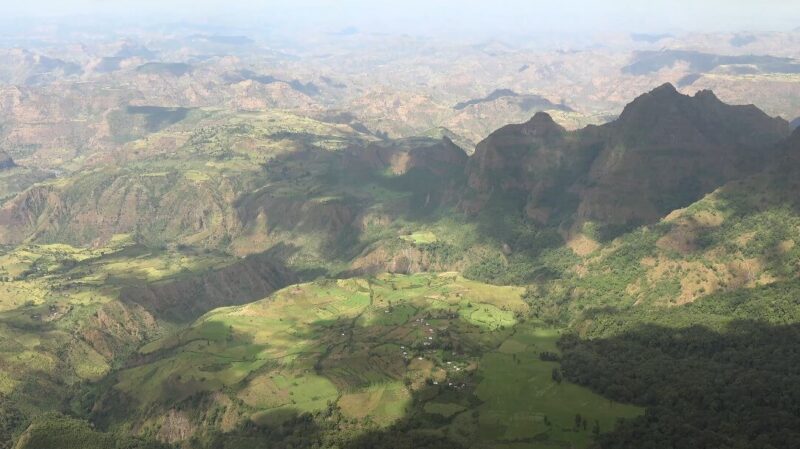
Located in northern Ethiopia, Simien Mountains National Park is a UNESCO World Heritage Site. Here, you will find dramatic landscapes with towering peaks, deep valleys, and sheer cliffs.
The park is home to Ras Deshen, the tallest peak in Ethiopia, standing over 4,500 meters. This is an excellent destination for trekking and offers some of the best routes in Africa.
Simien Mountains National Park is accessible from the city of Gondar, which is just north of the park. The park covers an area of 220 square kilometers and is known for its stunning viewpoints.
In addition to its natural beauty, the park is home to unique wildlife. You can spot animals like the Ethiopian wolf and the gelada monkey. The area is also rich in birdlife, attracting bird watchers from all over the world.
Whether you stay at the Simien Lodge or Limalimo Lodge, you will find comfortable accommodation options within the park. Both lodges offer breathtaking views and a great base for exploring the area.
Don’t miss visiting this remarkable destination during your trip to Ethiopia. The majestic scenery and wildlife make Simien Mountains National Park a highlight for any traveler.
3) Blue Nile Falls in Bahir Dar
The Blue Nile Falls, located about 30 kilometers southeast of Bahir Dar, is one of Ethiopia’s most stunning natural attractions. This waterfall, also known locally as Tis Abay, is renowned for its impressive flow and breathtaking scenery.
You can start your visit in the village of Tis Abay. The village has a ticket office where you can purchase entry tickets. The ticket office is just a short distance from the trailhead that leads to the falls.
One of the best ways to experience the falls is by taking a boat ride on the Blue Nile River. This allows you to see the falls from different angles and fully appreciate their beauty.
If you enjoy hiking, there are trails that offer various viewpoints of the falls. The trails are relatively easy to hike and provide excellent photo opportunities.
Besides the falls, the surrounding area is rich with wildlife and native plants, making it a great spot for nature lovers. You might even catch sight of some local birds or other small animals during your visit.
2) Lalibela’s Rock-Hewn Churches
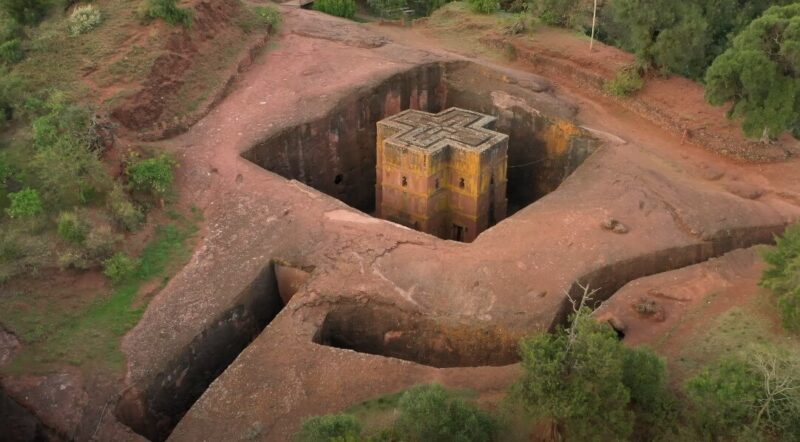
When you visit Ethiopia, one place you shouldn’t miss is Lalibela’s rock-hewn churches. Located in the highlands of northern Ethiopia, these medieval churches were carved directly out of rock.
Built in the 12th and 13th centuries, they showcase the impressive skills of Ethiopian craftsmen. The churches are not just historical monuments; they are still active places of worship today.
The site consists of 11 churches, divided into two main clusters. The most famous of these is Bet Giyorgis (Saint George). This church stands alone and is often considered the most striking.
Walking through the site, you will see intricate carvings and unique architectural designs. Each church has its own character, from towering columns to detailed crosses etched into the stone.
One interesting fact is that these churches are connected by a series of tunnels and narrow passageways. This adds a sense of adventure as you explore.
Lalibela is also a UNESCO World Heritage Site, recognized for its cultural and spiritual significance. Pilgrims from all over Ethiopia and the world come here to pay their respects.
You’ll find that the local guides are knowledgeable and enthusiastic. Their insights can make your visit even more enriching.
1) Addis Ababa’s Entoto Mountain
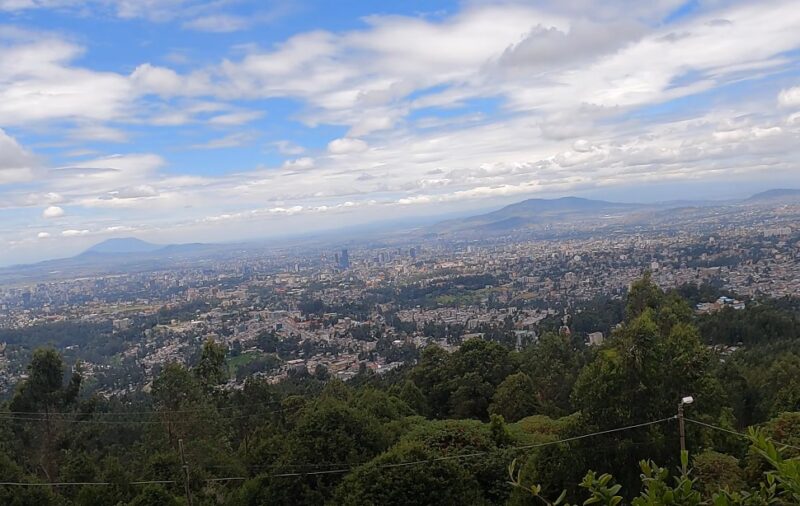
Entoto Mountain is one of the main attractions in Addis Ababa. Located on the northern edge of the city, it offers stunning views and a cooler climate.
Historically, it was the royal court to Emperor Menelik in the 1800s. Today, it is home to Entoto Natural Park, filled with lush forests.
The park includes many activities such as ziplining, rope courses, and archery. You’ll also find paved roads perfect for biking or running.
Entoto Mountain is also known for its traditional coffee ceremonies. These ceremonies offer you a chance to learn about Ethiopia’s rich coffee culture.
The area is about 5 square kilometers, so you’ll need more than a day to explore it all. It’s ideal for a weekend retreat.
The Bottom Line
Visiting Ethiopia offers a range of unique experiences. The country’s rich history and vibrant culture are truly captivating.
Prepare ahead to ensure a smooth trip. Drink plenty of water and wear appropriate clothing to stay comfortable.
Internet access may be limited, encouraging you to enjoy offline moments and immerse yourself in the environment.
Ethiopia’s destinations like Lalibela and the Danakil Depression make it a memorable adventure. Each location has its own charm and story that adds to the overall experience.

